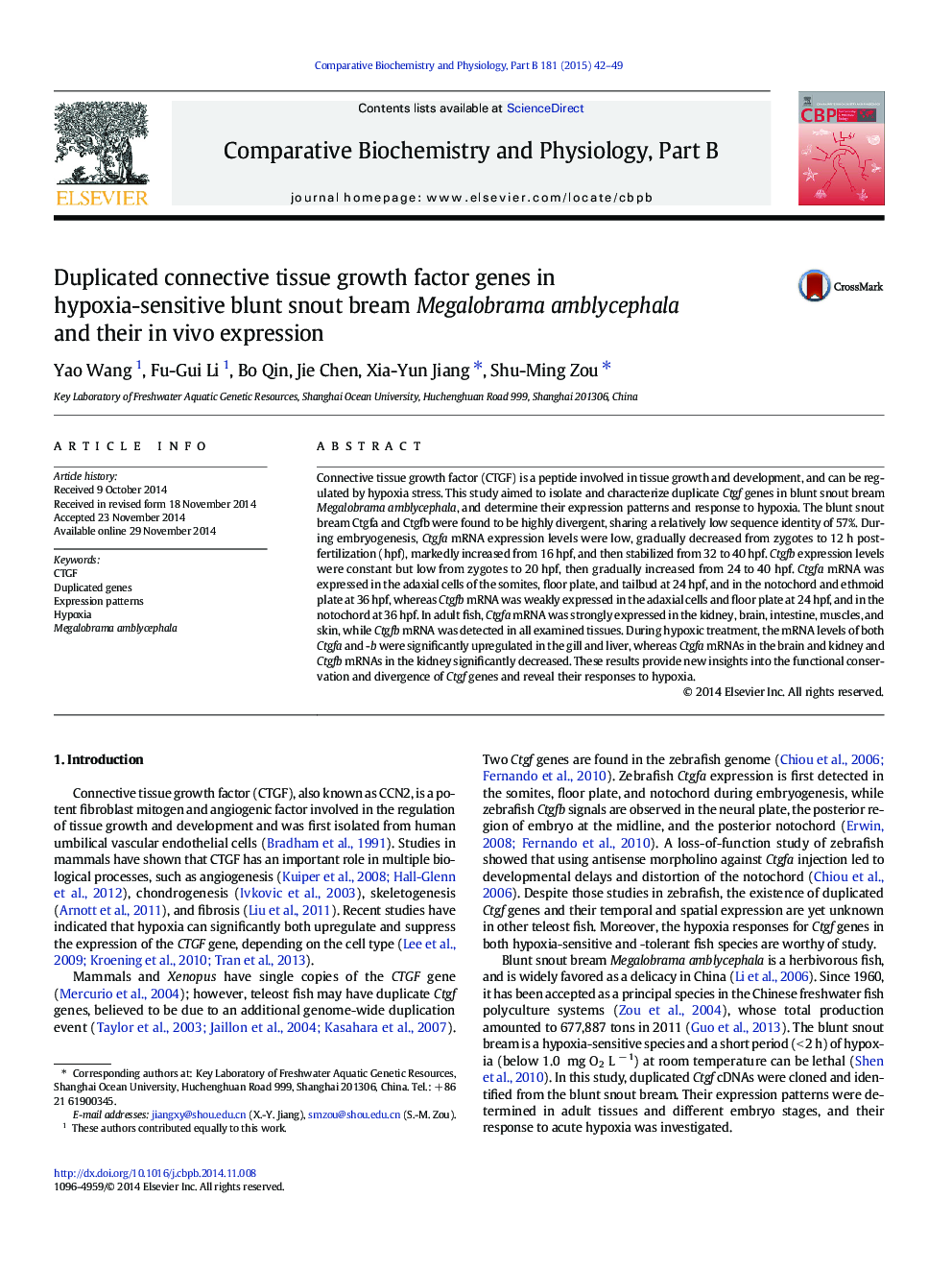| Article ID | Journal | Published Year | Pages | File Type |
|---|---|---|---|---|
| 1975195 | Comparative Biochemistry and Physiology Part B: Biochemistry and Molecular Biology | 2015 | 8 Pages |
Connective tissue growth factor (CTGF) is a peptide involved in tissue growth and development, and can be regulated by hypoxia stress. This study aimed to isolate and characterize duplicate Ctgf genes in blunt snout bream Megalobrama amblycephala, and determine their expression patterns and response to hypoxia. The blunt snout bream Ctgfa and Ctgfb were found to be highly divergent, sharing a relatively low sequence identity of 57%. During embryogenesis, Ctgfa mRNA expression levels were low, gradually decreased from zygotes to 12 h post-fertilization (hpf), markedly increased from 16 hpf, and then stabilized from 32 to 40 hpf. Ctgfb expression levels were constant but low from zygotes to 20 hpf, then gradually increased from 24 to 40 hpf. Ctgfa mRNA was expressed in the adaxial cells of the somites, floor plate, and tailbud at 24 hpf, and in the notochord and ethmoid plate at 36 hpf, whereas Ctgfb mRNA was weakly expressed in the adaxial cells and floor plate at 24 hpf, and in the notochord at 36 hpf. In adult fish, Ctgfa mRNA was strongly expressed in the kidney, brain, intestine, muscles, and skin, while Ctgfb mRNA was detected in all examined tissues. During hypoxic treatment, the mRNA levels of both Ctgfa and -b were significantly upregulated in the gill and liver, whereas Ctgfa mRNAs in the brain and kidney and Ctgfb mRNAs in the kidney significantly decreased. These results provide new insights into the functional conservation and divergence of Ctgf genes and reveal their responses to hypoxia.
